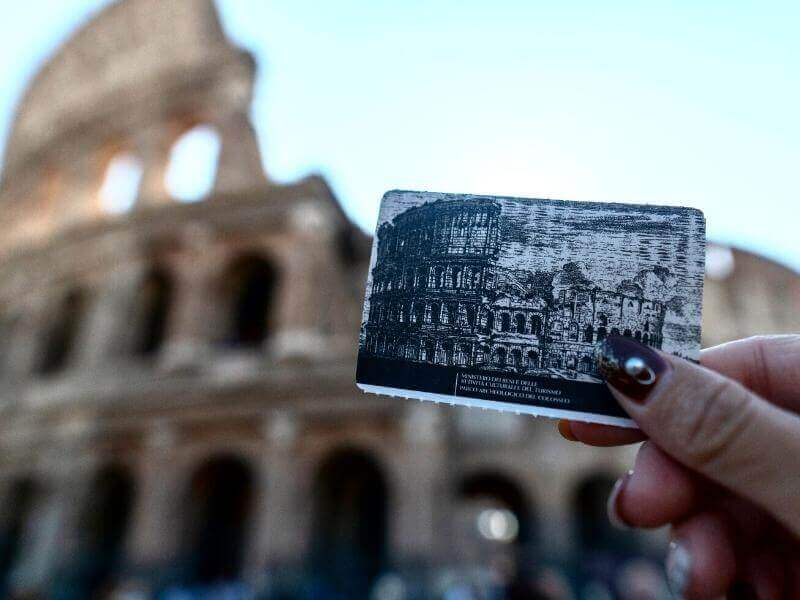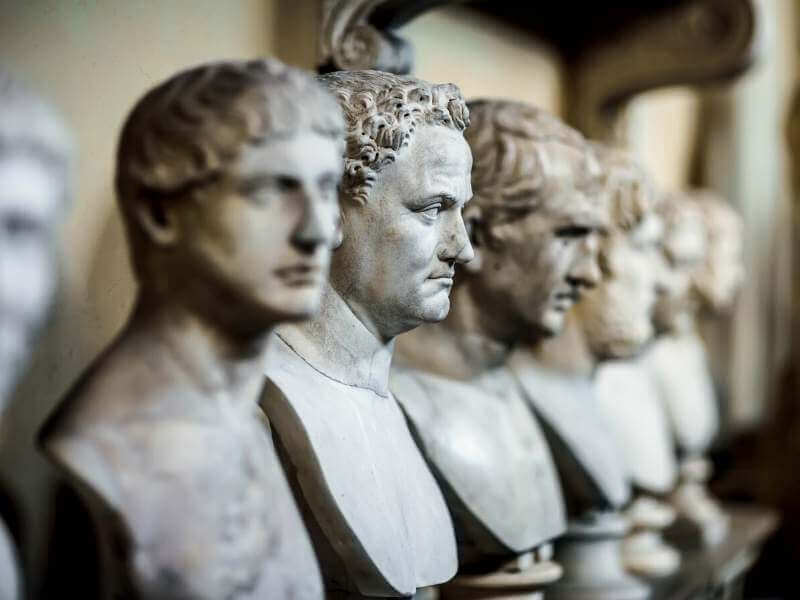Ostia Antica - The port city of ancient Rome
Home » Attractions » Ostia Antica
| DE

- - Updated on
A stone’s throw from the center of Rome lies Ostia Antica, the former port city and trading center of ancient Rome.
The “Parco Archeologico di Ostia Antica” is an insider tip for Rome’s attractions and one of the best-preserved Roman archaeological sites in the world.
Covering an area of around 100 hectares, tourists can let their imagination run wild and immerse themselves in the history of Roman life around a 30-minute drive southwest of Rome.
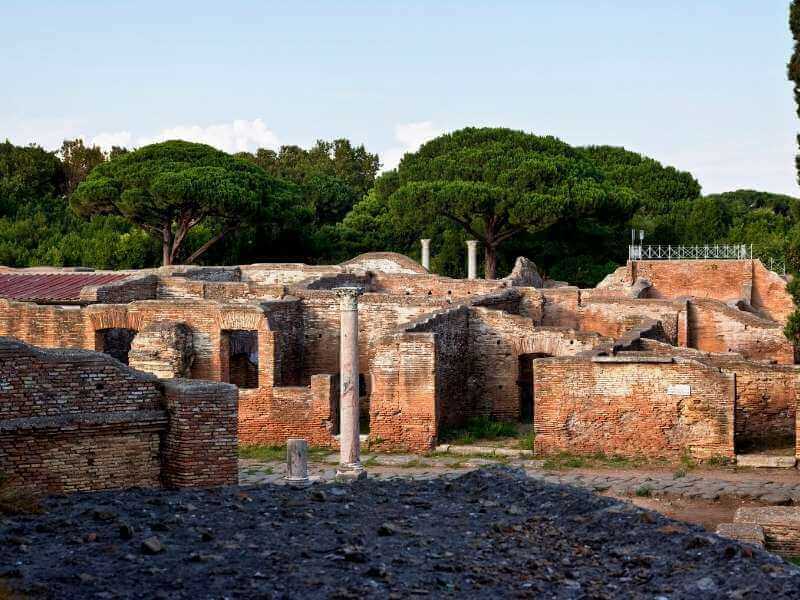
You can spend hours visiting the magnificent preserved ruins just a short distance from the sea. Around two-thirds of the former port city has been made visible through excavations.
These include numerous dwellings and temples, the theater of Marcus Agrippa with a capacity of 3,000 people, and other thermal baths, bakeries, taverns, dye works, trading offices, tombs, and much more.
Visitor Information:
Address:
Via dei Romagnoli 717, 00119 Roma
Transportation:
S-Bahn from Piazzale Ostiense (Metro B Piramide) -> Stop: Ostia Antica (approx. 25-minute ride)
Recommended exploration time:
2-3 hours
Ostia Antica Tickets:
The Roma Pass also includes admission to the Ostia Antica Archaeological Park!
Opening hours:
October 25 – February 28: 8.30 am – 4.30 pm (last admission at 3.30 pm)
March 01 – March 31: 8.30 a.m. – 5.15 pm (last admission at 4.15 pm)
April 01 – September 30: 8.30 a.m. – 7.00 pm (last admission at 6.00 pm)
October 01 – October 24: 8.30 a.m. – 6.30 pm (last admission at 5.30 pm)
Mondays: closed
Tuesdays to Sundays: open
Tickets Ostia Antica:
Ostia Antica - the port city of ancient Rome
The History of Ostia Antica
Ostia Antica was founded in the 7th century BC by Ancus Marcius (4th king of Rome). The name of the ancient city is derived from the Latin “ostium” and means “river mouth.”
The location of the former trading metropolis was strategically crucial for the Romans due to the River Tiber. In addition to trade, the port city was one of Rome’s many military bases.
At that time, mainly North African merchant ships brought their goods to Ostia. Most of the trade here was in wheat, then transported to Rome via the River Tiber.

At the time, the vast granaries had a capacity of up to 7,000 tons and could supply around 17,000 Romans for a whole year.
In addition to the all-important wheat, wild animals were regularly shipped from Africa. These were destined for the Colosseum and to keep the Roman population happy during the bloody gladiator fights. Wine and tin, on the other hand, came preferably from Gaul and Britain.
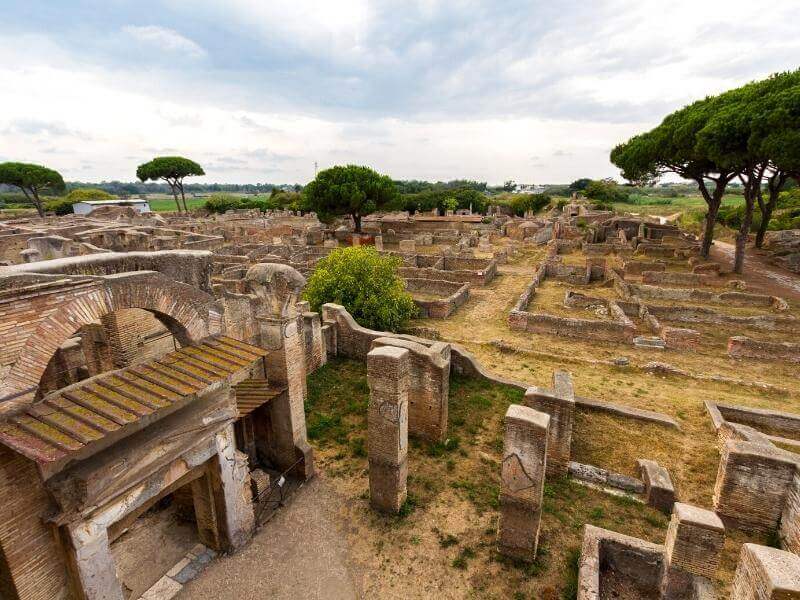
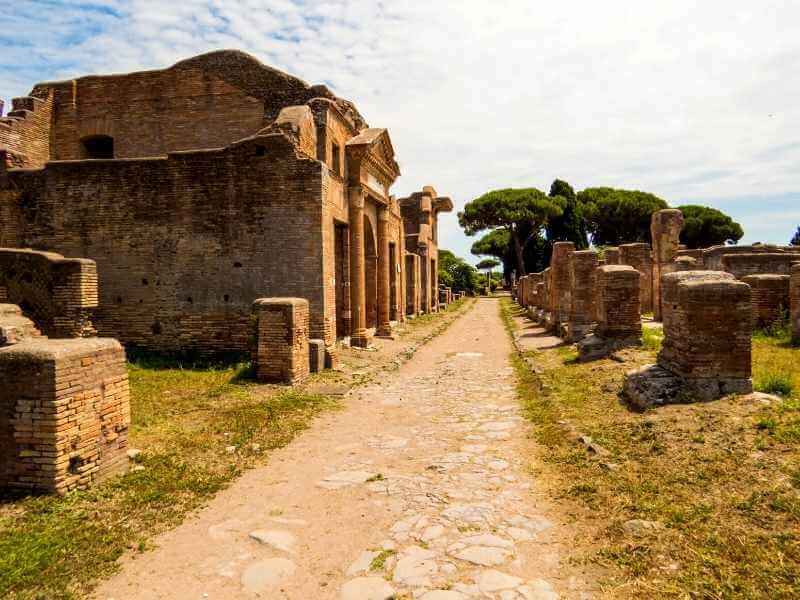
Ostia Antica reached its heyday in the 2nd century with a population of 75,000. During the fall of the Western Roman Empire in the 5th century, there was a slow but steady exodus from Ostia.
Today, the city makes an excellent day trip. Due to the less central location of this ancient sight, things are a little quieter here. Perfect for taking a short break from Rome’s tourist crowds and still experiencing a few historical highlights.
Our hotel recommendations at the airport near Ostia:
Have you already found a place to stay? We have researched the best hotels nearby! -> Rome Airport Hotels
Guest reviews: 8.6 (Excellent)
Ostia Antica is 30 minutes from Rome

Editor: Sebastian Erkens
Hey and welcome to Rome-Tourist! My name is Sebastian and I travel regularly to Rome, Italy.
On our Rome blog you will get valuable travel tips. If you have any questions about specific tours or sights, feel free to leave us a comment.
These articles may also interest you:



